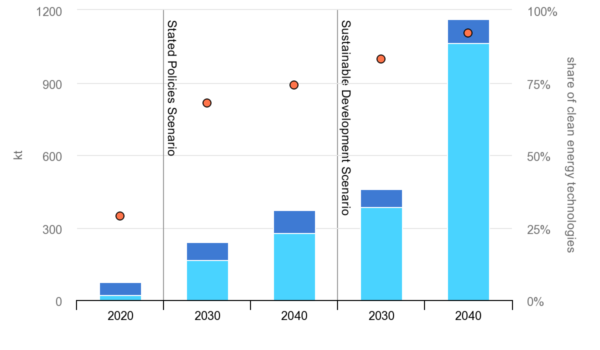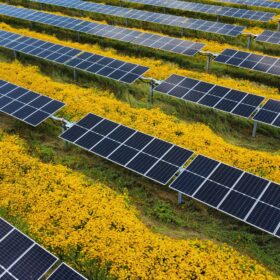A new company called Statevolt has been launched with the goal of creating a southern California EV battery gigafactory with an output of 54 GWh, equivalent to about 650,000 electric vehicles supplied annually. The project is expected to require a $4 billion capital expenditure.
This was announced by Lars Carlstrom, founder and CEO of Italvolt, which plans to launch a similar 45 GWh facility in northern Italy, to be designed and engineered by ABB.
In launching the Imperial Valley, California-based Statevolt, Carlstrom signed a letter of intent with Controlled Thermal Resources (CTR). In addition to lithium output, CTR will also develop geothermal power facilities. Statevolt is currently undergoing due diligence to determine the location of the gigafactory.
The partnership with CTR is expected to enable Statevolt operate a ‘hyper-local’ business model, sourcing the key feedstock of lithium from local resources. The company said this model leads to a more sustainable and secure supply chain, creating a local micro-industry and creating 2,500 jobs in the Imperial Valley region.
“The development of lithium-ion batteries is crucial for the U.S. to meet its goals to transition to Net Zero. Statevolt is proud to begin its journey to develop U.S. expertise and production of lithium-ion batteries, as we look to serve this critical market. Today, we face a significant shortage in the amount of lithium that is required to meet the demand for electric vehicles. We are pioneering a new, hyper-local business model, which prioritizes sustainability and resilience in the supply chain to solve this issue.” Lars Carlstrom, founder and CEO of Statevolt.
Lithium beneath the Salton Sea?
Global lithium demand may reach 383,000 metric tons by 2030, and the Biden administration has called for 50% of all automotive sales to be electric vehicles by 2030. Accordingly, gigafactories such as the Statevolt facility will be needed to support rapid development, foster supply chain resilience, and meet consumer demand in the near-to-medium term.


California’s Imperial Valley is home to the Salton Sea, where Lawrence Berkeley National Laboratory is conducting a research project to profile the concentration of lithium in a geothermal fields beneath the man-made body of water. Brine from the geothermal field is already pumped to the surface to generate geothermal power and recirculated back underground. Lithium could be extracted from brine before it is pumped underground. Eleven geothermal plants are now operating in the Salton Sea, which Berkeley Lab describes as “pilot” operations.
The project’s lead researcher Michael McKibben estimates there may be between 1 to 6 million metric tons of lithium under the Salton Sea.
Local geothermal experts
CTR has constructed and managed geothermal operations in Imperial Valley for over 30 years and was selected for its regional experience and technical knowledge to optimize Statevolt’s sustainability initiatives, said the new company in a press release.
“We applaud Lars and his team for taking a proactive approach to ensure the company’s future lithium supply, while also consciously seeking out the cleanest lithium and power available for Statevolt’s first U.S. Gigafactory. The extraordinary growth in electric vehicle adoption and the emerging demand for energy storage systems to provide clean power, highlights the urgent need to develop a strong and secure battery supply chain in the United States.” Rod Colwell, CEO of Controlled Thermal Resources.
Similar efforts are underway by KORE Power, which recently partnered with Novonix to support the buildout of a 12 GWh manufacturing facility in Buckeye, Arizona. The facility will be designed with a concept called the “sustainable valley” which supports a local supply chain from lithium sourcing to EV end-use.
This content is protected by copyright and may not be reused. If you want to cooperate with us and would like to reuse some of our content, please contact: editors@pv-magazine.com.








By submitting this form you agree to pv magazine using your data for the purposes of publishing your comment.
Your personal data will only be disclosed or otherwise transmitted to third parties for the purposes of spam filtering or if this is necessary for technical maintenance of the website. Any other transfer to third parties will not take place unless this is justified on the basis of applicable data protection regulations or if pv magazine is legally obliged to do so.
You may revoke this consent at any time with effect for the future, in which case your personal data will be deleted immediately. Otherwise, your data will be deleted if pv magazine has processed your request or the purpose of data storage is fulfilled.
Further information on data privacy can be found in our Data Protection Policy.